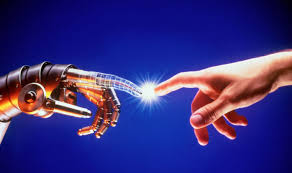
Breaking News
6.5x55 Swedish vs. 6.5 Creedmoor: The New 6.5mm Hotness
Best 7mm PRC Ammo: Hunting and Long-Distance Target Shooting
 Christmas Truce of 1914, World War I - For Sharing, For Peace
Christmas Truce of 1914, World War I - For Sharing, For Peace
Top Tech News
 EngineAI T800: Born to Disrupt! #EngineAI #robotics #newtechnology #newproduct
EngineAI T800: Born to Disrupt! #EngineAI #robotics #newtechnology #newproduct
 This Silicon Anode Breakthrough Could Mark A Turning Point For EV Batteries [Update]
This Silicon Anode Breakthrough Could Mark A Turning Point For EV Batteries [Update]
 Travel gadget promises to dry and iron your clothes – totally hands-free
Travel gadget promises to dry and iron your clothes – totally hands-free
 Perfect Aircrete, Kitchen Ingredients.
Perfect Aircrete, Kitchen Ingredients.
 Futuristic pixel-raising display lets you feel what's onscreen
Futuristic pixel-raising display lets you feel what's onscreen
 Cutting-Edge Facility Generates Pure Water and Hydrogen Fuel from Seawater for Mere Pennies
Cutting-Edge Facility Generates Pure Water and Hydrogen Fuel from Seawater for Mere Pennies
 This tiny dev board is packed with features for ambitious makers
This tiny dev board is packed with features for ambitious makers
 Scientists Discover Gel to Regrow Tooth Enamel
Scientists Discover Gel to Regrow Tooth Enamel
 Vitamin C and Dandelion Root Killing Cancer Cells -- as Former CDC Director Calls for COVID-19...
Vitamin C and Dandelion Root Killing Cancer Cells -- as Former CDC Director Calls for COVID-19...
 Galactic Brain: US firm plans space-based data centers, power grid to challenge China
Galactic Brain: US firm plans space-based data centers, power grid to challenge China
Robotic Touch: U Researchers Develop Way To Print Bionic Skin

Researchers at the University of Minnesota say they've developed a way to make "bionic skin," technology that could allow robots to feel their environments and humans to wear sensory-enhancing devices directly on their fingertips.
The university announced the discovery Wednesday, adding that the research, led by mechanical engineering professor Michael McAlpine, will be published in the next issue of Advanced Materials.
According to the U of M, McAlpine and his fellow researchers developed a way to 3D-print "stretchable electronic fabric" on human skin. While they haven't printed the technology on real human fingers just yet, they were able to successfully print the sensory material on the curved surface of model human hands.
The researchers say the technology could have several applications, from medicine to warfare. They added that the technology could be available in the very near future, as the 3D printing manufacturing techniques are part of the team's discovery.

 The State's Last Stand
The State's Last Stand


